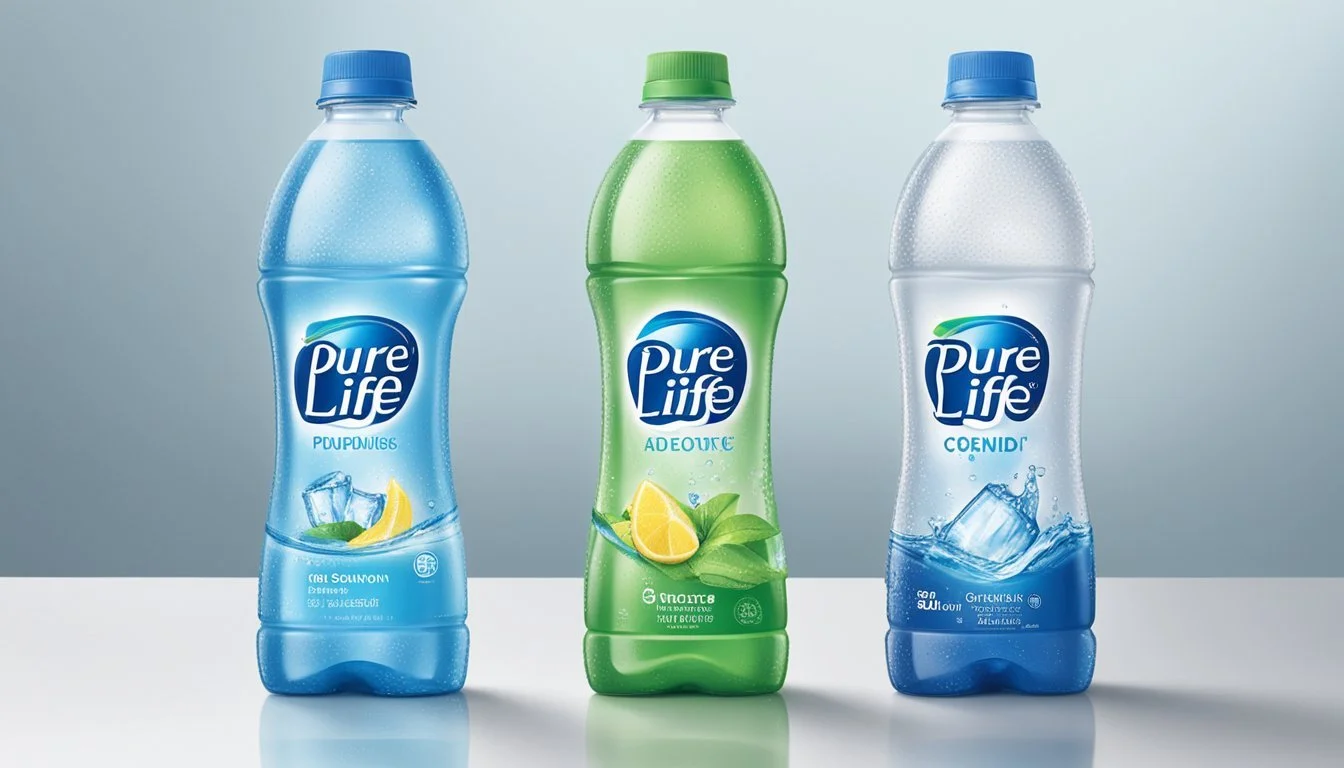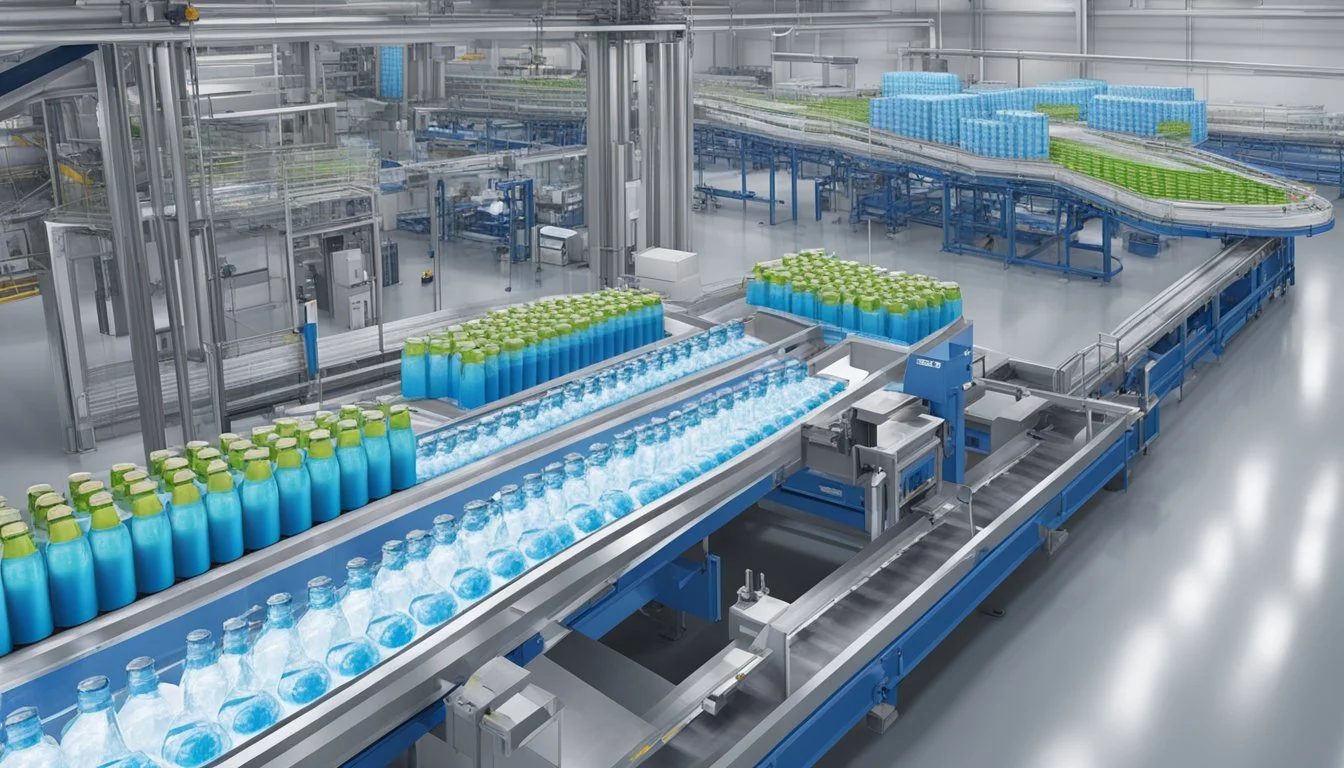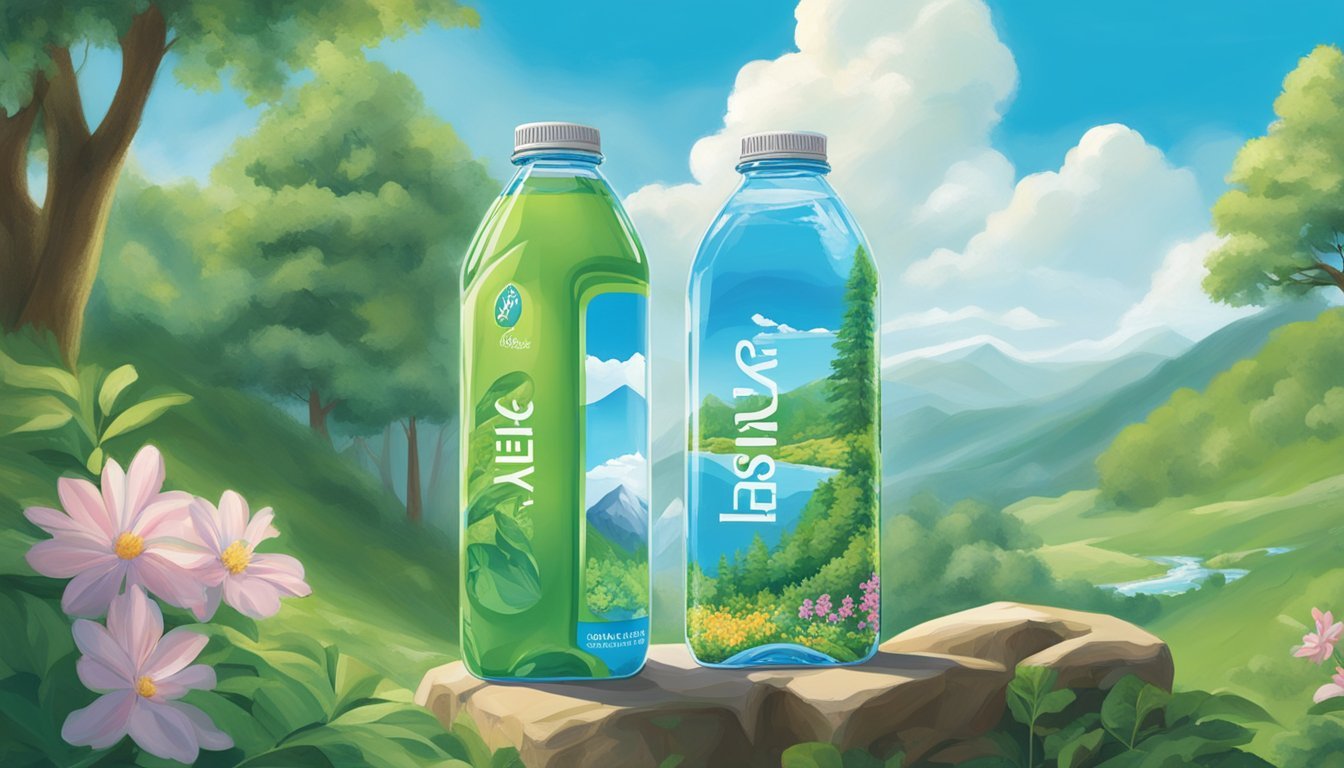Nestlé Pure Life vs. Origin
Which Bottled Water is Better? A Consumer Guide
Selecting the right bottled water can be more crucial than many realize. Nestlé Pure Life and Origin are two brands that offer distinct experiences for those seeking hydration. Nestlé Pure Life is renowned for its purified water, which undergoes a multi-step filtration process to ensure consistent quality and taste. Origin, however, prides itself on sourcing natural spring water that captures the unique mineral composition of its locale.
Nestlé Pure Life, backed by the world’s largest bottled water company, aims to provide reliability and purity. The meticulous filtration promises water that is free of contaminants, making it a trustworthy choice for daily hydration. Origin presents a different appeal, highlighting the natural essence and minerality of spring water that many find refreshing and invigorating.
The debate between using purified water versus natural spring water often hinges on personal preference and perceived health benefits. Consumers loyal to Nestlé Pure Life appreciate the rigorous standards that ensure safety and taste consistency. Those who prefer Origin value the natural, untouched quality of spring water that offers a unique flavor profile. Ultimately, the choice between Nestlé Pure Life and Origin depends on whether one prioritizes a reliable, purified experience or the natural, mineral-rich taste of spring water.
Understanding Bottled Water
Bottled water comes in various forms, each with distinct characteristics and regulatory standards, ensuring safety and quality for consumers.
Categories of Bottled Water
Natural Spring Water: Sourced directly from natural springs, this water is rich in naturally occurring minerals. It often has a unique taste due to its mineral composition.
Purified Water: This type of water undergoes rigorous filtration processes, removing impurities and contaminants. Brands like Nestlé Pure Life fall under this category, delivering consistent and clean water.
Mineral Water: Contains specific levels of minerals such as calcium, magnesium, and potassium. These minerals are either naturally present or added during the bottling process.
Each category has its unique attributes, catering to different preferences and needs for hydration and taste.
Regulatory Standards
EPA & FDA Regulations: In the United States, the Environmental Protection Agency (EPA) sets standards for tap water, while the Food and Drug Administration (FDA) regulates bottled water.
Safety and Quality: The FDA enforces stringent guidelines, ensuring bottled water is safe for consumption. Labels must accurately reflect the water’s source and processing.
International Standards: Countries may have different regulations, but most follow similar safety practices to protect consumers' health.
These standards ensure that whether one prefers spring or purified water, the product remains safe and reliable.
Comparing Nestlé Pure Life and Origin
This section examines important attributes such as origin, filtration methods, water quality, and health benefits to determine which bottled water provides better value to consumers.
Source and Natural Filtration
Nestlé Pure Life:
Nestlé Pure Life sources its water from a variety of locations, including both well and municipal water sources. The water undergoes a multi-step filtration process that includes reverse osmosis to ensure purity and safety.
Origin:
Origin water is sourced from protected natural springs. The natural filtration process through geological layers enhances the purity and mineral content of the water. This natural filtration is claimed to maintain the water’s original quality.
Comparison:
Attribute Nestlé Pure Life Origin Water Source Well and municipal sources Protected natural springs Filtration Method Reverse osmosis Natural geological filtration
Water Quality and Purity
Nestlé Pure Life:
Nestlé Pure Life frequently tests its water to ensure compliance with national and international quality standards. The reverse osmosis method effectively removes contaminants, resulting in high purity levels.
Origin:
Origin boasts of naturally high water quality due to its spring sources. Regular testing is conducted to maintain purity without the extensive need for artificial filtration processes.
Comparison:
Attribute Nestlé Pure Life Origin Testing Standards Frequent and rigorous Regular Purity Level High Naturally high
Taste Profile
Nestlé Pure Life:
Nestlé Pure Life water has a clean and neutral taste. However, in some blind taste tests, it has been ranked lower than premium brands due to a lack of distinct flavor.
Origin:
Origin water is known for its crisp and refreshing taste, attributed to its natural spring source. This taste is often preferred by those requiring a more refreshing hydration experience.
Comparison:
Attribute Nestlé Pure Life Origin Flavor Profile Neutral Crisp and fresh Consumer Preference Lower Higher
Mineral Content and Health Benefits
Nestlé Pure Life:
Nestlé Pure Life water contains minimal mineral content due to the reverse osmosis process, which removes many minerals. While it ensures purity, this process may result in fewer health benefits from minerals.
Origin:
Origin water retains its natural mineral content, contributing to its health benefits. Essential minerals like calcium and magnesium are naturally present, offering potential health advantages.
Comparison:
Attribute Nestlé Pure Life Origin Mineral Content Minimal Rich in natural minerals Health Benefits Limited Significant due to minerals
This comparison highlights the key aspects of both brands, aiding consumers in making an informed choice based on their preferences and understanding of bottled water qualities.
Production and Packaging
Nestlé Pure Life and Origin both emphasize high standards in their bottling and purification processes, along with a commitment to sustainable packaging practices.
Bottling and Purification Process
Nestlé Pure Life employs a multi-step purification process. It includes microfiltration, reverse osmosis, and ultraviolet light exposure to ensure the water is clean and safe. This rigorous process aims to provide a consistent, neutral taste across all its products.
Origin also utilizes an advanced purification process but places a significant focus on the source of its water. Extracted from pristine natural springs, Origin’s water undergoes minimal processing to maintain the natural minerals and taste.
Both brands aim to offer high-quality bottled water, but their approaches to purification highlight distinct philosophies: Pure Life prioritizes consistency and purity, while Origin emphasizes natural sourcing and minimal processing.
Packaging Materials and Environmental Impact
Nestlé Pure Life uses BPA-free plastic bottles which are designed to be lightweight and recyclable. Despite this, plastic waste remains a significant environmental concern. The company has also introduced bottles made from 100% recycled plastic to reduce its environmental footprint.
Origin has adopted a different approach by offering water in glass bottles, which are fully recyclable and have a lesser impact on the environment compared to plastic. This choice aligns with efforts to minimize plastic waste and promote sustainability.
Both brands are committed to reducing their environmental impact, with Nestlé Pure Life focusing on recycled materials and Origin opting for sustainable packaging solutions like glass. These efforts aim to address the growing consumer demand for eco-friendly products.
Water Safety and Contaminants
Water safety is a critical aspect when evaluating bottled water. Nestlé Pure Life and Origin both face scrutiny regarding contaminants like heavy metals and chemical substances. Understanding these factors helps determine which brand offers safer hydration.
Lead and Heavy Metals
Lead and heavy metals are significant concerns in bottled water. Contaminants such as lead can originate from old pipes in municipal sources or manufacturing processes.
Nestlé Pure Life was found to contain varying levels of heavy metals, although within acceptable regulations. Regular quality checks ensure these levels remain low, but presence is still a consideration.
Origin emphasizes sourcing water from pristine sources to avoid heavy metals. Independent tests show minimal to non-detectable levels of lead and heavy metals in their products. This makes it a potentially safer option for consumers worried about these contaminants.
Chemical Contaminants and Microbial Purity
Chemical contaminants like PFAS and microplastics present another safety challenge. Studies showed Nestlé Pure Life containing up to 10,000 plastic pieces per liter, raising health concerns.
PFAS chemicals in noncarbonated and carbonated waters further complicate safety. Consumer Reports found these substances in several brands, including Nestlé Pure Life, although the extent varies.
Microbial purity is also crucial. Both brands undergo extensive filtration to eliminate harmful bacteria and viruses. However, Origin's natural filtration might offer a cleaner profile.
Ensuring chemical and microbial purity in bottled water is essential. Regular testing and adherence to safety standards are necessary for both brands to maintain consumer trust.
Health and Hydration
Nestlé Pure Life and Origin both aim to provide quality hydration. Their effectiveness in supporting overall health relies on factors like electrolyte content and pH levels.
Role of Electrolytes in Hydration
Electrolytes like calcium and magnesium play a crucial role in maintaining hydration. They help regulate fluid balance, muscle function, and nerve signaling.
Nestlé Pure Life is known for its minimal mineral content, focusing on pure hydration without added electrolytes. This can be beneficial for those looking for straightforward, clean water without any additional substances.
Origin water, often sourced from natural springs, may contain higher levels of electrolytes. This type of water can be more beneficial for those needing mineral support, especially during intense physical activities.
Impact of pH Levels on Health
The pH level of water can influence health, with some advocating for alkaline water due to its potential benefits in neutralizing acid in the body.
Nestlé Pure Life typically maintains a neutral pH, making it a reliable choice for daily consumption without significantly altering the body's acid-base balance.
Origin water might have a naturally higher pH, qualifying it as alkaline water. This can be particularly advantageous for individuals looking to reduce acidity and improve their body's overall pH levels.
Understanding these elements can guide your choice between these two bottled waters based on your specific health and hydration needs.
Environmental Considerations
Nestlé Pure Life and Origin are brands that pay considerable attention to their environmental impact. Their efforts encompass the sustainability of water sources and robust recycling programs.
Sustainability of Water Sources
Nestlé Pure Life sources its water through a multiple-stage filtration process, ensuring quality and safety. The brand operates in over 40 countries, with a commitment to sustainable water usage practices. They claim strict adherence to local regulations and sustainability benchmarks to minimize environmental harm.
Origin emphasizes sourcing water from natural springs, focusing on renewable sources. This approach helps in maintaining a balance in the ecosystem. The brand is vigilant in its extraction processes to avoid depletion of local water supplies.
Both brands strive for minimal environmental disruption, ensuring that their sourcing methods are aligned with long-term sustainability goals.
Recycling Programs and Sustainability Efforts
Nestlé Pure Life has made strides in reducing its PET consumption. By light-weighting their bottles, they aim to lessen plastic usage. The brand also engages in numerous recycling programs globally to encourage proper plastic disposal and recycling habits among consumers.
Origin supports comprehensive recycling initiatives to mitigate plastic waste. They partner with local communities to enhance recycling rates and improve awareness about environmental sustainability.
Both brands are committed to reducing their carbon footprint. Their initiatives include using recyclable materials, promoting eco-friendly packaging, and investing in technologies that minimize environmental impact. These efforts highlight the brands' dedication to sustainability and responsible environmental stewardship.
Market Trends and Consumer Choices
Consumers today are increasingly scrutinizing bottled water brands based on sustainability and quality. This section examines how competitive brands position themselves and what factors drive consumer preferences.
Competitive Brands and Market Position
The bottled water market showcases a variety of brands, each vying for a distinct position. Nestlé Pure Life focuses on affordability without compromising quality.
Brands like Fiji, Evian, and Voss cater to premium segments with unique sourcing and mineral profiles. Aquafina and Dasani, backed by major beverage giants PepsiCo and Coca-Cola respectively, dominate due to robust distribution networks.
Additionally, Poland Spring and Ozarka have strong regional loyalties, evidenced by their localized sourcing. Regional preference is also seen in Zephyrhills and Deer Park, part of BlueTriton Brands alongside Arrowhead and Perrier.
Premium brands like Icelandic Glacial and Acqua Panna gain attention for their purity and taste profile. Emerging eco-friendly brands such as Boxed Water and Path position themselves as sustainable alternatives, reflecting a growing trend towards environmental consciousness in consumer choices.
Consumer Preferences and Habits
Consumer choices in bottled water are influenced by a mix of brand perception, taste, price, and sustainability. Nestlé Waters leverages its global presence to appeal to price-conscious consumers, while Core Hydration and Penta focus on health-conscious buyers seeking specific pH balances or additives.
Environmental concerns are pushing consumers towards brands offering reduced plastic usage or recyclable packaging. Brand loyalty often hinges on regional sourcing credibility, as seen with Mountain Valley and Ethos Water.
Sports and fitness enthusiasts frequently opt for Gatorade hydration solutions, while luxury-seeking consumers may prefer Fiji or Evian for their exotic sources. Regional brands like Ozarka and Zephyrhills gain favor locally for their connection to community and perceived freshness.
In essence, the bottled water market is diverse, with choices heavily influenced by a blend of price sensitivity, health considerations, environmental impact, and brand heritage.
More About Nestlé Pure Life
Acqua Panna vs Nestle Pure Life: Which Bottled Water is Better?
Aquafina vs Nestle Pure Life: Which Bottled Water is Better?
Arrowhead vs Nestle Pure Life: Which Bottled Water is Better?
Boxed Water vs Nestle Pure Life: Which Bottled Water is Better?
Core Hydration vs Nestle Pure Life: Which Bottled Water is Better?
Deer Park vs Nestle Pure Life: Which Bottled Water is Better?
Essentia vs Nestle Pure Life: Which Bottled Water is Better?
Ice Mountain vs Nestle Pure Life: Which Bottled Water is Better?
Icelandic Glacial vs Nestle Pure Life: Which Bottled Water is Better?
Just Water vs Nestle Pure Life: Which Bottled Water is Better?
Mountain Valley Spring Water vs Nestle Pure Life: Which Bottled Water is Better?
Nestle Pure Life vs 1907water: Which Bottled Water is Better?
Nestle Pure Life vs 7-Select: Which Bottled Water is Better?
Nestle Pure Life vs Alkaline88: Which Bottled Water is Better?
Nestle Pure Life vs Antipodes: Which Bottled Water is Better?
Nestle Pure Life vs Aqua Carpatica: Which Bottled Water is Better?
Nestle Pure Life vs Big Chill: Which Bottled Water is Better?
Nestle Pure Life vs BodyArmor: Which Bottled Water is Better?
Nestle Pure Life vs Cascade Mountain: Which Bottled Water is Better?
Nestle Pure Life vs Castle Rock: Which Bottled Water is Better?
Nestle Pure Life vs CBD Living: Which Bottled Water is Better?
Nestle Pure Life vs Crystal Geyser: Which Bottled Water is Better?
Nestle Pure Life vs Crystal Lake: Which Bottled Water is Better?
Nestle Pure Life vs Essence pH10: Which Bottled Water is Better?
Nestle Pure Life vs Hawaii Volcanic: Which Bottled Water is Better?
Nestle Pure Life vs Hawaiian Springs: Which Bottled Water is Better?
Nestle Pure Life vs Kirkland Signature: Which Bottled Water is Better?
Nestle Pure Life vs Liquid Death: Which Bottled Water is Better?
Nestle Pure Life vs Mananalu: Which Bottled Water is Better?
Nestle Pure Life vs Open Water: Which Bottled Water is Better?
Nestle Pure Life vs Poland Spring: Which Bottled Water is Better?
Nestle Pure Life vs Proud Source: Which Bottled Water is Better?
Nestle Pure Life vs Pure Life: Which Bottled Water is Better?
Nestle Pure Life vs Purely Sedona: Which Bottled Water is Better?
Nestle Pure Life vs Refreshe: Which Bottled Water is Better?
Nestle Pure Life vs Richard's Rainwater: Which Bottled Water is Better?
Nestle Pure Life vs San Pellegrino: Which Bottled Water is Better?
Nestle Pure Life vs Simple Truth: Which Bottled Water is Better?
Nestle Pure Life vs Smartwater: Which Bottled Water is Better?
Nestle Pure Life vs Solan de Cabras: Which Bottled Water is Better?
Nestle Pure Life vs Talking Rain AQA: Which Bottled Water is Better?
Nestle Pure Life vs The Well: Which Bottled Water is Better?
Nestle Pure Life vs Topo Chico: Which Bottled Water is Better?
Nestle Pure Life vs Tru Alka: Which Bottled Water is Better?
Nestle Pure Life vs Weird Water: Which Bottled Water is Better?
Nestle Pure Life vs Whole Foods 365: Which Bottled Water is Better?
Nestle Pure Life vs Whole Foods Italian Still Mineral water: Which Bottled Water is Better?
Nestle Pure Life vs Zephyrhills: Which Bottled Water is Better?









